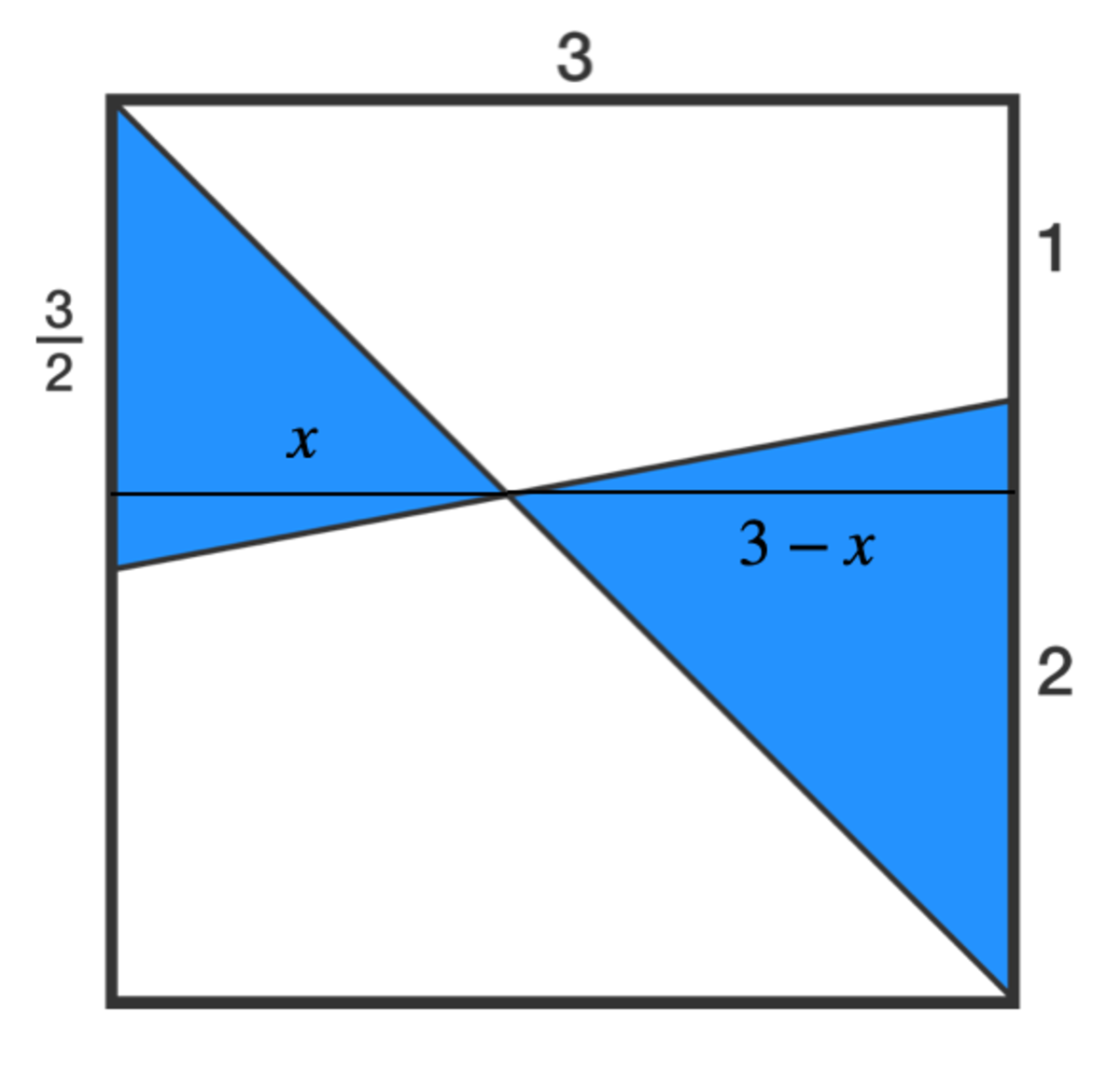Sliced Square
A square with side lengths 3 is divided by the two lines in the diagram. Find the combined area of the blue regions.
This section requires Javascript.
You are seeing this because something didn't load right. We suggest you, (a) try
refreshing the page, (b) enabling javascript if it is disabled on your browser and,
finally, (c)
loading the
non-javascript version of this page
. We're sorry about the hassle.
2 solutions
Another way to solve this is using integration. We can put this on a graph and specify the points, then we can get the equation of the two straight lines, y=3-x and y=3/2-7x/6. They intersect at 3-x=3/2-7x/6, simplifying we get 3/2-7x/6=0 and we can get x here which equals to 9/7. Now we have the limits of x, from 0 to 9/7 and from 9/7 to 3.
We integrate as follows:
-First integral ( x from 0 to 9/7 ) for (3/2-7x/6)dx, evaluating we get 27/28 -Second integral ( x from 9/7 to 3 ) for -(3/2-7x/6)dx , evaluating we get 12/7
Now adding both of them to get the area, 27/28+12/7=75/28
Therefore, area for the two blue regions is 75/28
Similarity

The two triangles are similar to each other, by A A similarity. Thus
1 . 5 x = 2 3 − x ⟹ 2 x + 1 . 5 x = 4 . 5 ⟹ x = 7 9
Areas
Area = 2 1 ( 1 . 5 x ) + 2 1 ( 2 ( 3 − x ) ) = 2 1 ( 6 − 2 x ) = 2 1 ( 1 4 8 4 − 7 9 ⋅ 2 1 ) = 2 8 7 5
The two blue triangles are similar to each other. The area of the smaller triangle is (1/2)(3/2)(h1). The area of the larger triangle is (1/2)(2)(h2). Because the side of the square has length 3, h1 + h2 = 3.
The proportion (3/2) / h1 = 2/ h2 can be solved for h2. h2 = 4/3 h1.
Let h2 = 3 - h1. Therefore 4/3 h1 = 3 - h1. And h1 = 9/7.
The area of the smaller triangle is (1/2)(3/2)(9/7). The area of the larger triangle is (1/2)(2)(3 - 9/7).
Therefore the total area of the blue triangles is 75/28.